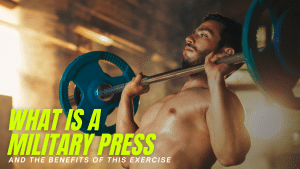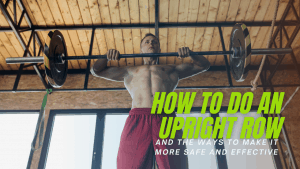What muscles does a shoulder press machine work
and the benefits
Most gyms are equipped with a variety of exercise instruments that range from the smallest bits and bobs to the most massive workout machines. Whatever exercise equipment you have in mind, 99% of the time any gym will have it. And one of the most common equipment that has become a staple in almost every fitness haven is the shoulder press machine.
If you have never seen a shoulder press machine and you have no idea what it looks like, just follow the sound of ragged breathing and the guttural grunts of men in the gym and you will most likely find it. It is almost like a tourist attraction. But despite its popularity among gym goers, do you really need to use the shoulder press machine?
The what, why, and how of the shoulder press machine
The shoulder press machine is a fixed resistance equipment that requires you to press overhead from a seated position. Fixed resistance means that you cannot control your pattern of movement as you lift the weights; the only thing you can do is to follow the motion the machine allows, which is completely different from using free weights where you have more freedom of movement.
But while movement is something you are unable to control using this machine, resistance is a different story. You can easily control the amount of it by adjusting the weight stack and loading more plates until you reach the weight you are most comfortable with so that you still maintain proper form throughout your routine.
With that being said, the shoulder press machine can be a good addition to your workout routine because it is an excellent equipment that will strengthen and tone the shoulders. Not only is this machine going to make your shoulders aesthetically pleasing, it is also going to improve their functionality to help you in your day-to-day activities.
But how do you get started in using this beast of a machine? Here is a step-by-step guide on how to use the equipment:
- Before settling down on the machine, make sure that the seat is adjusted to your height and the bars in front of you are at shoulder level. Make yourself comfortable by sitting with your back against the pad, your feet firmly planted to the ground, and your knees bent at a right angle and shoulder-width apart.
- Hold the bars with a firm overhand grip.
- Push the weight overhead. Pause at the top but refrain from locking out your elbows.
- Lower the bar back down in a controlled manner and keep the tension at the bottom of the movement to provide momentum for the next rep. Avoid completely dropping the weight back down to rest.
The muscles at work
The machine shoulder press is an equipment that is fairly easy to use. It is pretty simple and straightforward, but don’t think for a second that this does little to your shoulders just because it is not as complex as other shoulder exercises.
And while there are a multitude of muscles at work during this exercise, these are the primary muscles doing most of the work.
Deltoids
The deltoids are located at the top of your shoulders and are one of the prime movers when using the shoulder press machine. This muscle group is made up of three parts: the anterior deltoid at the front, lateral deltoid along the exterior of the shoulder, and the posterior deltoid at the back of your shoulder. The function of the deltoid as a whole is to raise the arm overhead. When you use the shoulder press machine, the anterior deltoid becomes the most active part.
Triceps
The triceps are the large muscles at the back of your upper arm. Although it is crossing both the shoulder and elbow joints, the triceps straighten the latter when using a shoulder press machine. But if you want the triceps to work even more, try another variation of the shoulder press using a barbell instead of the shoulder press machine. The closer your hands are on the bar, the more the triceps are activated.
Trapezius
The trapezius is a large muscle that goes from the base of your skull to the middle of your back and across the top of your shoulders. It has three parts—the upper, middle, and lower traps—which make up the entirety of the upper back and help stabilize the shoulders every time you use a shoulder press machine. During the exercise, the middle and lower traps assist with the rotation of your shoulder blades as you extend your arms overhead.
Stabilizers
The stabilizer muscles are the muscles that, while not being targeted in a shoulder press, are critical in stabilizing the shoulders. These include the internal and external shoulder rotators which both work to keep the shoulder joint stable, and the finger flexors in your forearms which contracts to allow you to have solid grip on the bars.
What else does the shoulder press machine do for your body?
Strength boost
The most obvious benefit of the shoulder press, whether you use free weights or a machine, is improved strength. The exercise targets several of the major upper body muscles and, as a result, enhances the functionality of your entire upper body.
Bones of steel
Another important benefit of strong shoulders is increased bone strength. When you bring your arms overhead, the weights place the load on your bones, providing them stress and causing them to adapt just like your muscles. Your bones respond by increasing their mineral density which, in turn, decreases your risk of osteoporosis among other things.
Better stability
You will likely experience this in your arms and shoulders after several exercises using the shoulder press machine. The movement requires the stabilizer muscles on your wrists, elbows, and shoulders to ensure that your joints stay in place as you press.
But if you do shoulder presses standing up, you will also experience better stability in your core, and you will also notice improved posture because your abdominals and lower back are used extensively to steady yourself as you lift the weights overhead.
Free weights or machine?
It all boils down to a matter of preference, really.
Using free weights requires more full-body work compared to doing shoulder presses in a machine. This is because you rely on your abdominals and lower back, and engage other smaller muscles to stabilize yourself during the press, making the exercise more compound.
Meanwhile, using a shoulder press machine will allow you to focus more on larger muscle groups like the deltoids. This is because you are not recruiting other muscles, like the abdominals and lower back, since the back pad is already giving you enough support and assistance. This also means that you will be able to lift heavier weights because other weaker muscles will not stop you from doing the exercise.
If isolation of a specific muscle group is your goal, then doing shoulder presses on a machine is your way to go. But if you want to involve other muscles in your press to make it more compound, then free weights would be better for you. Either way, you can always include both in your workout routine.
More challenging shoulder press variations
Do you think a typical shoulder press on a machine is still too boring for you? Try these other shoulder exercises that will guarantee significant gains and find out which one will give you the best results.
Push press
The push press is an explosive movement which allows you to lift 10-20% more than your regular overhead press. This exercise will hit your shoulders and triceps hard while also working your chest, abs, lower back, and legs.
Single-arm bottoms-up KB press
If you are looking to develop your shoulder stability, this exercise is for you. The single-arm bottoms-up press creates strength while developing your shoulder joint stability. Mastering this exercise will help improve your performance in other exercises as well, such as the bench press.
Seated Arnold press
This exercise targets all of the main shoulder muscles, and since this needs to be done in a seated position, the focus of the load is in your upper body because there is minimal assistance needed from your core and legs.
Half-kneeling single-arm Arnold press
This exercise requires stabilization from your core as you perform it in a half-kneeling position. You will notice that just like in a regular shoulder press, effort is required to keep your spine in a neutral position as you push the weight overhead.
Z-Press
The Z-press may look like an easy exercise because it requires you to be seated, but it is definitely not. You will not be able to use your legs for stability because most—if not all—of the load is on your core and upper body. This will not only test your strength, but also your mobility.
Pike push-up
This exercise makes use of your bodyweight for resistance, instead of plates which you would normally use in a shoulder press machine. The pike push-up requires you to be partially upside down and to blast your shoulders and upper body while recruiting your core and legs for stability.


